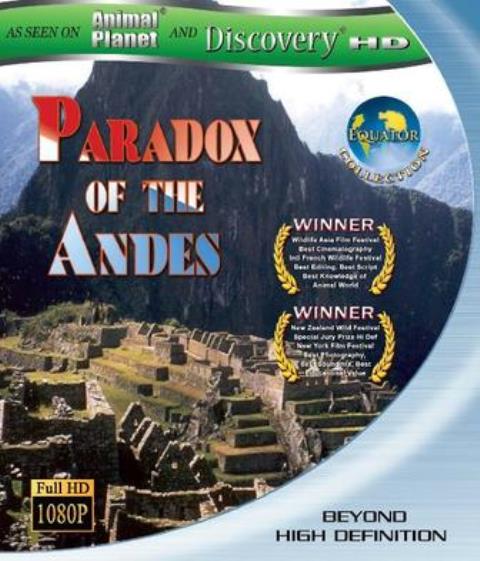《赤道系列之奇特的安第斯山》是由various導演的美國紀錄片。
基本介紹
- 中文名:赤道系列:奇特的安第斯山
- 外文名:Equator: Paradox of the Andes
- 其它譯名:赤道.奇特的安第斯山
- 出品時間:2009年
- 製片地區:美國
- 導演:various
- 類型:紀錄片
- 上映時間:2009-10-06
- 對白語言:英語
- 色彩:彩色
- imdb編碼:tt2417220
- 國家:美國
簡介
赤道不僅把這個世界分成了兩半,它還是這個世界演化發展的源頭。強烈的陽光加快了這裡進化的步伐。赤道地區僅覆蓋了地球表面的5%,但它卻擁有地球生命總數的50%。這個出色的高清晰系列影片將帶我們到達這個星球上最極端、最豐富多彩的地方。該系列影片考察了六個位於赤道的高熱帶地區非洲大裂谷、亞馬遜盆地、安第斯山、東南亞地區、印度-太平洋地區和科隆(加拉帕戈斯)群島。 在厄瓜多的安第斯高地,強烈的陽光透過稀薄的空氣炙烤著草原,周圍點綴著冰河和雲霧繚繞的森林。 白晝時,四季如夏;夜晚,四季如冬。在每一日的24小時內,這裡的動物和植物必須應付嚴寒和酷暑兩種挑戰。
The Andes are one of the most unusual places at the Equator. In Ecuador, a country whose Spanish name means ‘equator’, unexpected plants and animals meet on the slopes of active volcanoes. Every day, a conflict rages between the heat of the equatorial sun and cold created by towering mountains. The weather is always unpredictable and changeable, and the inhabitants of the paramo must endure four seasons in a day, and sometimes even in an hour.
The Andes are one of the most unusual places at the Equator. In Ecuador, a country whose Spanish name means ‘equator’, unexpected plants and animals meet on the slopes of active volcanoes. Every day, a conflict rages between the heat of the equatorial sun and cold created by towering mountains. The weather is always unpredictable and changeable, and the inhabitants of the paramo must endure four seasons in a day, and sometimes even in an hour.
Vicunas are camels, perfectly adapted to the cold desert of the high paramo. They’re protected from cold and intense levels of solar radiation by wool that is among the finest and warmest in the world. At 4300 metres above sea level air contains only half the oxygen it does at sea level, but vicunas can maximize each breath of this thin air. Their blood contains red cells that quickly absorb oxygen, and its thin blood is easily pumped around its body by a big heart.
The Ecuadorian hillstar, the world’s highest altitude hummingbird, copes with low air density by perching instead of hovering when it feeds. At the season-less Equator, food is available year-round, supporting an incredible diversity of plants and animals. On the lower slopes of the volcanoes, tiny tropical hummingbirds have a sugar-fuelled lifestyle, feeding on bromeliad nectar in lush, wet low paramo and cloud forest. Spectacled bears are South America’s only species of bear. They climb high into the canopy of the cloud forest, in search of the sweet hearts of perching bromeliads. A male spectacled bear, weighing in at nearly 180 kilograms, is able to destroy the massive flowering spike of a puya, a giant bromeliad that lives on the ground and is armed with fierce spikes.
The rare mountain tapir is the largest animal in the Andes, and the bulldozer of the paramo. Like the bears, the tapir is an ice age relic, with a thick coat to keep it warm during the long equatorial night. When temperatures sink to minus six at night, the plants of the paramo survive by super-cooling their sap. In a stream that flows strongly and doesn’t freeze, a tiny ferocious predator hunts for insects and fish. The nocturnal fishing mouse is a strong swimmer and diver, and like the hummingbird it is hyper-active and must eat frequent meals, often. With a wingspan of more than three metres, the condor is the world’s largest land bird. They glide effortlessly on intense thermals, created by the power of the equatorial sun.
The Andes of Ecuador truly are a place of paradox, where ice age survivors feed on tropical plants, and face the daily challenge of living in a world of sun and ice which can be both inhospitable and plentiful.

